Acer Aspire 3 (A315-35) review – extremely affordable device that comes with the expected compromises
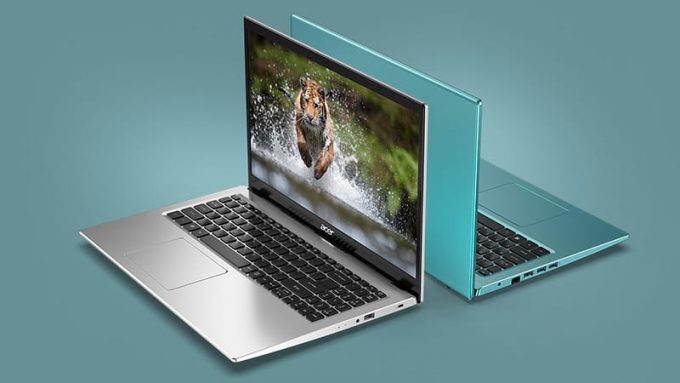 In the course of a pandemic, that put the entire world on its head, a lot of people were required to equip themselves with a computer. And most of them needed a portable one. Hence, the laptop world completely exploded, before running to a halt, when supplies started to run dry.
In the course of a pandemic, that put the entire world on its head, a lot of people were required to equip themselves with a computer. And most of them needed a portable one. Hence, the laptop world completely exploded, before running to a halt, when supplies started to run dry.
But which devices sold best? Without a doubt – the least expensive once. After all, most of them were used in very light work scenarios. One such device is the Acer Aspire 3 (A315-35). It uses a body that looks modern, and hardware that is designed to open Web browsers, work with documents and play videos. That’s pretty much it.
On the other hand, this is not the only laptop that can do that, and with that said – what separates it from the other devices on the market. Well, first of all, this is an exquisitely affordable offering. It also uses Intel’s latest Jasper Lake energy-efficient processors, which come with a 6W TDP. This means that whatever the task you throw at it is, it will preserve the battery.
Unfortunately, there is one caveat – we could only find the laptop paired with a 1080p TN panel. And while the resolution is fine, displays of the twisted-nematic technology have long been obsolete in our view.
You can check the prices and configurations in our Specs System: https://laptopmedia.com/series/acer-aspire-3-a315-35/
Contents
Specs Sheet
- HDD/SSD
- up to 1000GB SSD + up to 1000GB HDD
- M.2 Slot
- 1x 2280 M.2 NVMe slot See photo
- RAM
- up to 16GB
- OS
- Windows 11 Home, No OS, Linux, Windows 10 Home
- Battery
- 36.7Wh, 2-cell, 36.7Wh, 2-cell , 36Wh, 2-cell
- Body material
- Plastic / Polycarbonate
- Dimensions
- 363.4 x 238.4 x 19.9 mm (14.31" x 9.39" x 0.78")
- Weight
- 1.90 kg (4.2 lbs)
- Ports and connectivity
- 1x USB Type-A
- 2.0
- 2x USB Type-A
- 3.2 Gen 1 (5 Gbps)
- HDMI
- 2.0
- Ethernet LAN
- 10, 100, 1000 Mbit/s
- Wi-Fi
- 802.11ac
- Bluetooth
- 5.0
- Audio jack
- 3.5mm Combo Jack
- Features
- Fingerprint reader
- Web camera
- VGA
- Backlit keyboard
- Microphone
- Speakers
- 2 Stereo Speakers
- Optical drive
- Security Lock slot
- Kensington Lock Slot
All Acer Aspire 3 (A315-35) configurations
What’s in the box?
Inside the package, we found some paperwork, as well as a 45W charger.
Design and construction
Normally, you shouldn’t expect a great build quality from a product of this price. And the Aspire 3 (A315-35) kind of proves this point. It is made entirely out of plastic, and we see flex in both the base and the lid. On the other hand, it is quite resistant to fingerprints, and it is generally easy to handle with its weight of 1.90 kg, and a profile of 19.9mm.
Expectedly, the lid can’t be opened with a single hand. However, once you open it, the backside of the base gets lifted from the ground, which provides a slightly better cooling efficiency. Additionally, the plastic rim around the matte display doesn’t look too thick, as the top bezel houses a VGA Web camera.
Moving to the keyboard, we see a unit that features a NumberPad section but no backlight, unfortunately. Also, the key travel is too short. On the other hand, the feedback is clicky…sometimes. You see, there is some non-uniformity of the clicking mechanism of all keys – weird, but not unseen in the budget laptop world.
Speaking of the clicking mechanism, there is the touchpad. Its tracking is okay, but definitely not the best. Thankfully, its size is pretty big, which can’t be a bad thing.
Looking at the bottom panel (which is weirdly painted in a different color to the rest of the body), we see the speaker cutouts, as well as a pretty sizeable ventilation grill. Also, the hot air gets exhausted from a slot in between the base and the lid.
Ports
On the left side, there is the power plug, an RJ-45 connector, an HDMI connector, and two USB Type-A 3.2 (Gen. 1) ports. Then, on the right, there is a lock slot, a USB Type-A 2.0 port, and an audio jack.
Disassembly, upgrade options and maintenance
There are 11 Phillips-head screws holding this notebook’s bottom panel in place. After you undo them, pry the panel with a plastic tool and remove it from the chassis.
Unsurprisingly, the battery here is a bit small. Its capacity is 37Wh.
On the other hand, you get two SODIMM slots for memory upgrades. The chipset here supports up to 32GB of DDR4 RAM in total. As for the storage, there is one M.2 NVMe slot, as well as a 2.5-inch SATA drive bay.
Cooling-wise, you get a super thin heat pipe, a rather small heat sink, and a medium-sized fan.
Display quality
Acer Aspire 3 (A315-35) is equipped with a Full HD TN panel with a model number BOE NT156FHM-N61 (BOE07CB). Its diagonal is 15.6″ (39.62 cm), and the resolution is 1920 х 1080 pixels. The screen ratio is 16:9, and we are looking at a pixel density of – 142 ppi, and a pitch of 0.18 х 0.18 mm. The screen turns into Retina when viewed at distance equal to or greater than 60cm (24″) (from this distance one’s eye stops differentiating the separate pixels, and it is normal for looking at a laptop).
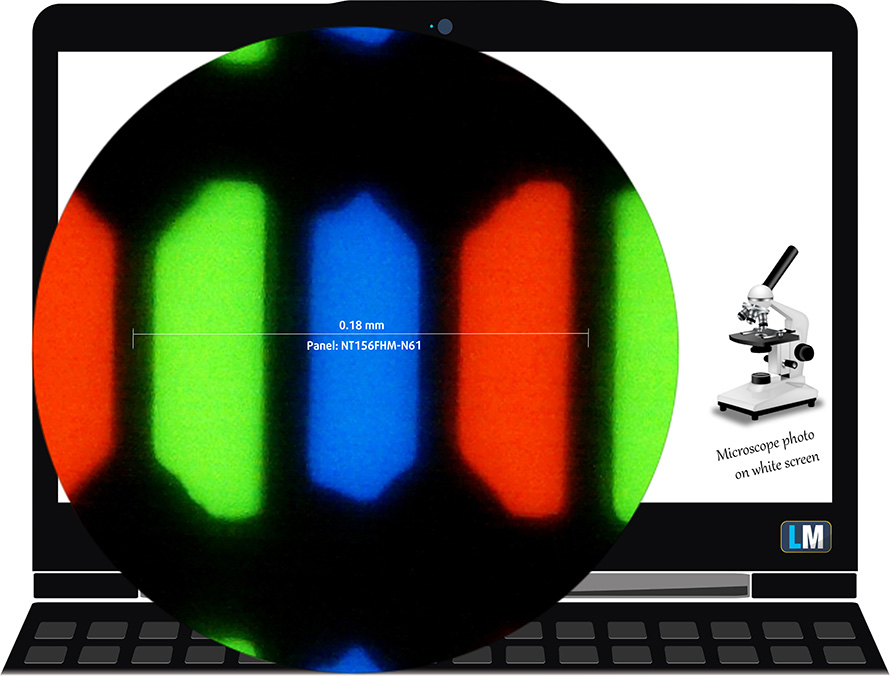
As expected from a TN panel – the viewing angles are terrible. We offer images at 45° to evaluate image quality.

Also, a video with locked focus and exposure.
The measured maximum brightness of 233 nits in the middle of the screen and 224 nits as an average for the whole area, with a maximum deviation of 9%. The Correlated Color Temperature on a white screen is 7060K – colder than the optimal for the sRGB standard of 6500K.
In the illustration below you can see how the display performs from a uniformity perspective. In other words, the leakage of light from the light source.
Values of dE2000 over 4.0 should not occur, and this parameter is one of the first you should check if you intend to use the laptop for color-sensitive work. The contrast ratio is low – 260:1.
To make sure we are on the same page, we would like to give you a little introduction to the sRGB color gamut and the Adobe RGB. To start, there’s the CIE 1976 Uniform Chromaticity Diagram that represents the visible specter of colors by the human eye, giving you a better perception of the color gamut coverage and the color accuracy.
Inside the black triangle, you will see the standard color gamut (sRGB) that is being used by millions of people on HDTV and on the web. As for the Adobe RGB, this is used in professional cameras, monitors, etc for printing. Basically, colors inside the black triangle are used by everyone and this is the essential part of the color quality and color accuracy of a mainstream notebook.
Still, we’ve included other color spaces like the famous DCI-P3 standard used by movie studios, as well as the digital UHD Rec.2020 standard. Rec.2020, however, is still a thing of the future and it’s difficult for today’s displays to cover that well. We’ve also included the so-called Michael Pointer gamut, or Pointer’s gamut, which represents the colors that naturally occur around us every day.
The yellow dotted line shows Acer Aspire 3 (A315-35)’s color gamut coverage.
Its display covers 50% of the sRGB/ITU-R BT.709 (web/HDTV standard) in CIE1976.
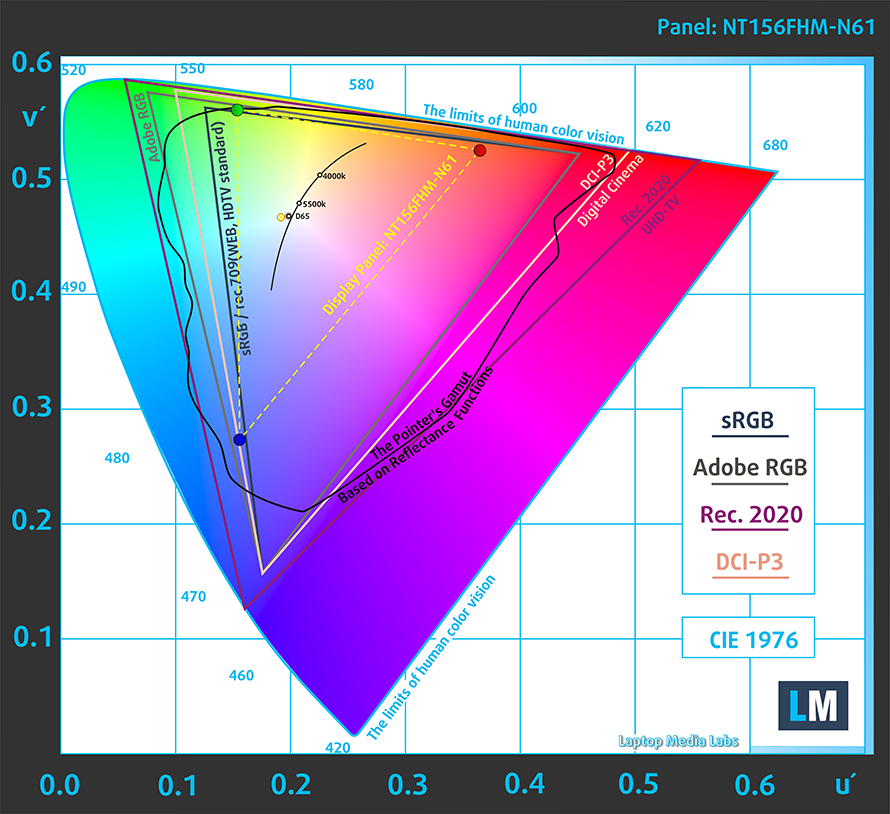
Our “Design and Gaming” profile delivers optimal color temperature (6500K) at 140 cd/m2 luminance and sRGB gamma mode.
We tested the accuracy of the display with 24 commonly used colors like light and dark human skin, blue sky, green grass, orange, etc. You can check out the results at factory condition and also, with the “Design and Gaming” profile.
Below you can compare the scores of Acer Aspire 3 (A315-35) with the default settings (left), and with the “Gaming and Web design” profile (right).
The next figure shows how well the display is able to reproduce really dark parts of an image, which is essential when watching movies or playing games in low ambient light.
The left side of the image represents the display with stock settings, while the right one is with the “Gaming and Web Design” profile activated. On the horizontal axis, you will find the grayscale, and on the vertical axis – the luminance of the display. On the two graphs below you can easily check for yourself how your display handles the darkest nuances but keep in mind that this also depends on the settings of your current display, the calibration, the viewing angle, and the surrounding light conditions.
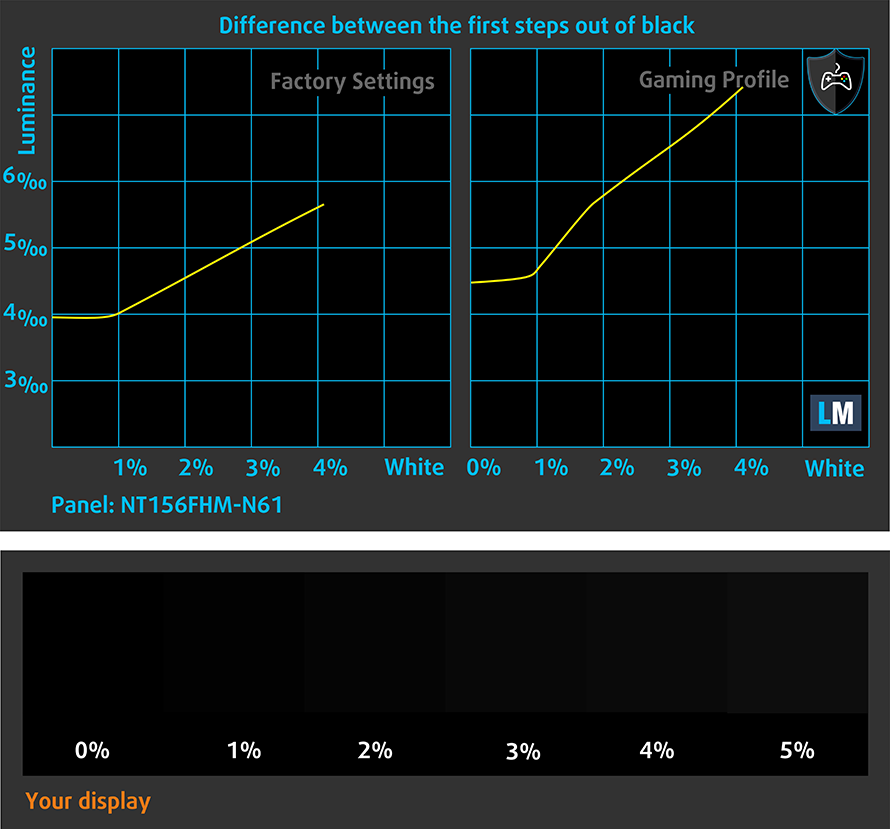
Response time (Gaming capabilities)
We test the reaction time of the pixels with the usual “black-to-white” and “white-to-black” method from 10% to 90% and vice versa.
We recorded Fall Time + Rise Time = 11 ms.

PWM (Screen flickering)
Pulse-width modulation (PWM) is an easy way to control monitor brightness. When you lower the brightness, the light intensity of the backlight is not lowered, but instead turned off and on by the electronics with a frequency indistinguishable to the human eye. In these light impulses, the light/no-light time ratio varies, while brightness remains unchanged, which is harmful to your eyes. You can read more about that in our dedicated article on PWM.
Acer Aspire 3 (A315-35) doesn’t use PWM to regulate its brightness levels. This makes it comfortable for long working periods, without being harmful in this aspect.
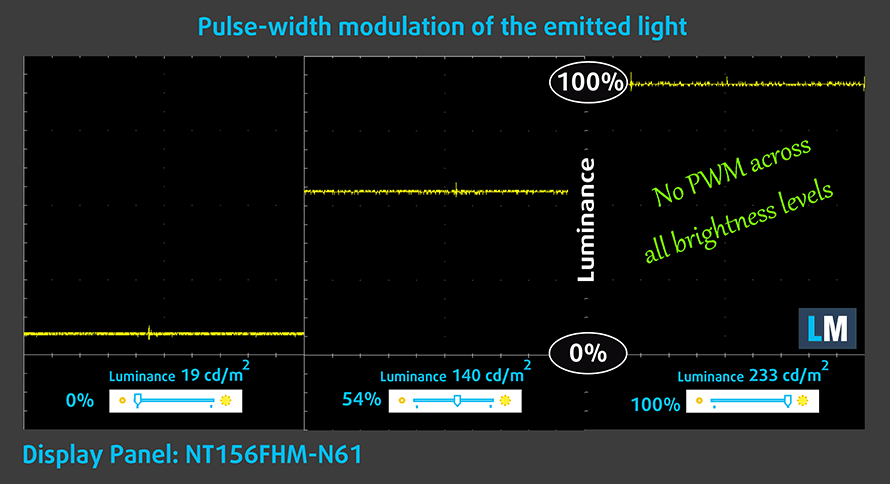
Blue light emissions
Installing our Health-Guard profile not only eliminates PWM but also reduces the harmful Blue Light emissions while keeping the colors of the screen perceptually accurate. If you’re not familiar with the Blue light, the TL;DR version is – emissions that negatively affect your eyes, skin, and your whole body. You can find more information about that in our dedicated article on Blue Light.
Buy our profiles
Since our profiles are tailored for each individual display model, this article and its respective profile package are meant for Acer Aspire 3 (A315-35) configurations with 15.6″ FHD TN BOE NT156FHM-N61 (BOE07CB).
*Should you have problems with downloading the purchased file, try using a different browser to open the link you’ll receive via e-mail. If the download target is a .php file instead of an archive, change the file extension to .zip or contact us at [email protected].
Read more about the profiles HERE.
In addition to receiving efficient and health-friendly profiles, by buying LaptopMedia's products you also support the development of our labs, where we test devices in order to produce the most objective reviews possible.

Office Work
Office Work should be used mostly by users who spend most of the time looking at pieces of text, tables or just surfing. This profile aims to deliver better distinctness and clarity by keeping a flat gamma curve (2.20), native color temperature and perceptually accurate colors.

Design and Gaming
This profile is aimed at designers who work with colors professionally, and for games and movies as well. Design and Gaming takes display panels to their limits, making them as accurate as possible in the sRGB IEC61966-2-1 standard for Web and HDTV, at white point D65.

Health-Guard
Health-Guard eliminates the harmful Pulse-Width Modulation (PWM) and reduces the negative Blue Light which affects our eyes and body. Since it’s custom tailored for every panel, it manages to keep the colors perceptually accurate. Health-Guard simulates paper so the pressure on the eyes is greatly reduced.
Get all 3 profiles with 33% discount
Sound
Acer Aspire 3 (A315-35)’s speakers are not great. They have some deviations across the entire frequency spectrum, and the maximum volume is a bit low.

Drivers
All of the drivers and utilities for this notebook can be found here: https://www.acer.com/ac/en/US/content/support-product/8823?b=1
Battery
Now, we conduct the battery tests with Windows Better performance setting turned on, screen brightness adjusted to 120 nits, and all other programs turned off except for the one we are testing the notebook with. This laptop’s 37Wh battery pack delivers 8 hours and 9 minutes of Web browsing, and 6 hours and 29 minutes of video playback.
In order to simulate real-life conditions, we used our own script for automatic web browsing through over 70 websites.

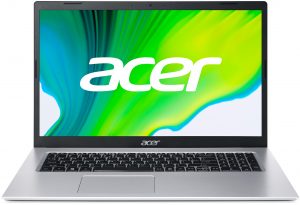


For every test like this, we use the same video in HD.




CPU options
As of the moment of writing this review, this laptop could be found with three energy-efficient CPUs – Intel Celeron N4500, Celeron N5100, and Pentium Silver N6000.
Results are from the Cinebench 20 CPU test (the higher the score, the better)
Results are from our Photoshop benchmark test (the lower the score, the better)
GPU options
Respectively, all of these processors feature a Jasper Lake Intel UHD Graphics iGPU. In this order, they have 16, 24, and 32 EU.
Results are from the 3DMark: Time Spy (Graphics) benchmark (higher the score, the better)
Results are from the 3DMark: Fire Strike (Graphics) benchmark (higher the score, the better)
Results are from the Unigine Superposition benchmark (higher the score, the better)
Gaming tests

| CS:GO | HD 1080p, Low (Check settings) | HD 1080p, Medium (Check settings) | HD 1080p, MAX (Check settings) |
|---|---|---|---|
| Average FPS | 25 fps | 14 fps | – fps |

| DOTA 2 | HD 1080p, Low (Check settings) | HD 1080p, Normal (Check settings) | HD 1080p, High (Check settings) |
|---|---|---|---|
| Average FPS | 39 fps | 21 fps | – fps |
Temperatures and comfort
Max CPU load
In this test we use 100% on the CPU cores, monitoring their frequencies and chip temperature. The first column shows a computer’s reaction to a short load (2-10 seconds), the second column simulates a serious task (between 15 and 30 seconds), and the third column is a good indicator of how good the laptop is for long loads such as video rendering.
Average core frequency (base frequency + X); CPU temp.
| Intel Celeron N4500 (6W TDP) | 0:02 – 0:10 sec | 0:15 – 0:30 sec | 10:00 – 15:00 min |
|---|---|---|---|
| Acer Aspire 3 (A315-35) | 2.79 GHz @ 53°C @ 7.5W | 2.79 GHz @ 54°C @ 7.7W | 2.64 GHz @ 55°C @ 7 |
This processor runs comfortably at its full clock speed during the first two checkpoints. Ultimately, the cooling solution does its job perfectly with a ton of headroom.
Comfort during full load
This allows for a nearly silent experience, as well as cool external temperatures.
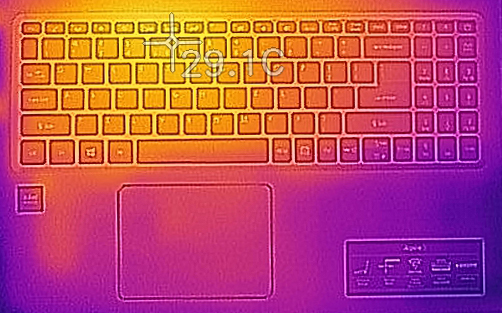
Verdict
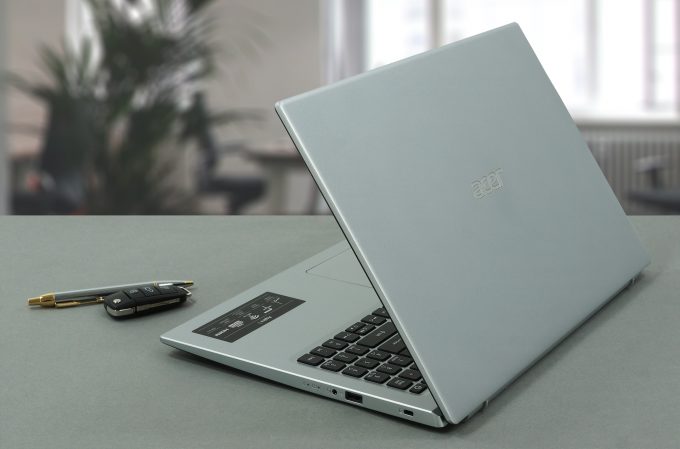 So, this laptop is not something too impressive. It features new, yet incapable hardware, a small battery, and input devices that are the epitome of compromise. On the other hand, it is not like we expected this to be different. In fact, the battery life is not that bad with just over 8 hours of Web browsing, and roughly 6 hours and a half of video playback.
So, this laptop is not something too impressive. It features new, yet incapable hardware, a small battery, and input devices that are the epitome of compromise. On the other hand, it is not like we expected this to be different. In fact, the battery life is not that bad with just over 8 hours of Web browsing, and roughly 6 hours and a half of video playback.
This gives you the freedom to go be mobile. And surprisingly, you can think with the future in mind, as there are two SODIMM slots for DDR4 RAM, as well as an M.2 NVMe slot for storage, and a 2.5-inch SATA drive bay for even more storage. Well, it could have been great if Acer actually supplied the mounting accessories with the laptop, but given the price tag – it can be forgiven.
On the other hand, make sure you get either the Celeron N5100 or ideally the Pentium Silver N6000. Unfortunately, we found the basepoint Celeron N4500 and its two lonely cores to be severely underpowered in 2021.
Acer Aspire 3 (A315-35)’s TN panel (BOE NT156FHM-N61 (BOE07CB)) has a Full HD resolution, quick pixel response times, and a non-flickering backlight. With that, all of the positives about this panel seem to end, as the viewing angles are super narrow, the contrast ratio – horrendous, and the color coverage – 50% of sRGB.
And no, the I/O isn’t much better either. Unfortunately, you don’t get an SD card reader of any sort, nor a USB Type-C port.
As we said at the beginning, you can’t expect to not make sacrifices at this price point. Moreover, the compromises will be arguably more than the features, so you have to brace yourself. On the other hand, we are happy with Acer’s approach to the device, as it doesn’t look particularly cheap. And despite all of the misfortunes around the machine, the biggest one in our view is the TN panel. So if you happen to find a configuration equipped with an IPS display, it might be worth your hard-earned money. In fact, the 17-inch Acer Aspire 3 (A317-33) came with a fairly decent package.
You can check the prices and configurations in our Specs System: https://laptopmedia.com/series/acer-aspire-3-a315-35/
Pros
- Aggressive pricing
- 1x M.2 NVMe + 2x RAM SODIMM
- Good optimization
- Doesn’t use PWM for brightness adjustment (BOE NT156FHM-N61 (BOE07CB))
Cons
- No MicroSD card slot and USB Type-C port
- Covers only 50% of the sRGB gamut (BOE NT156FHM-N61 (BOE07CB))
- Narrow viewing angles and poor contrast ratio (BOE NT156FHM-N61 (BOE07CB))
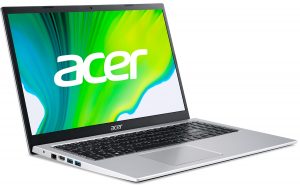
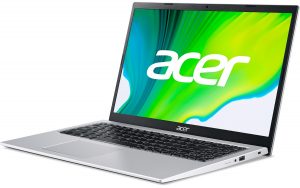

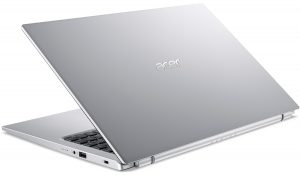
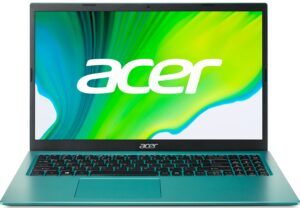

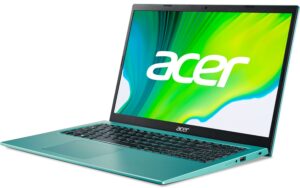
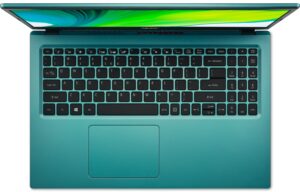
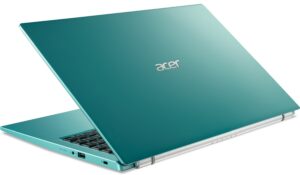
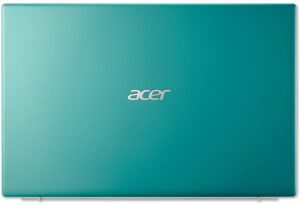
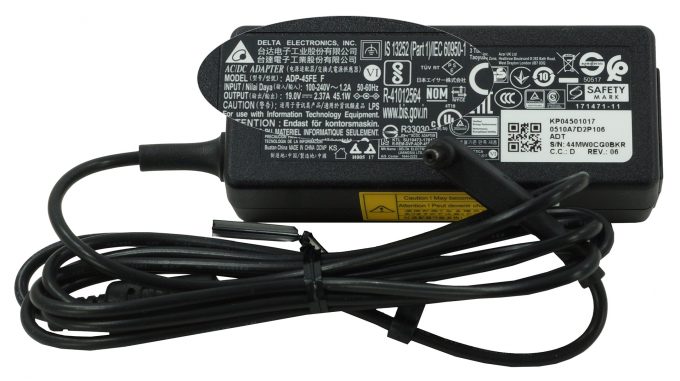
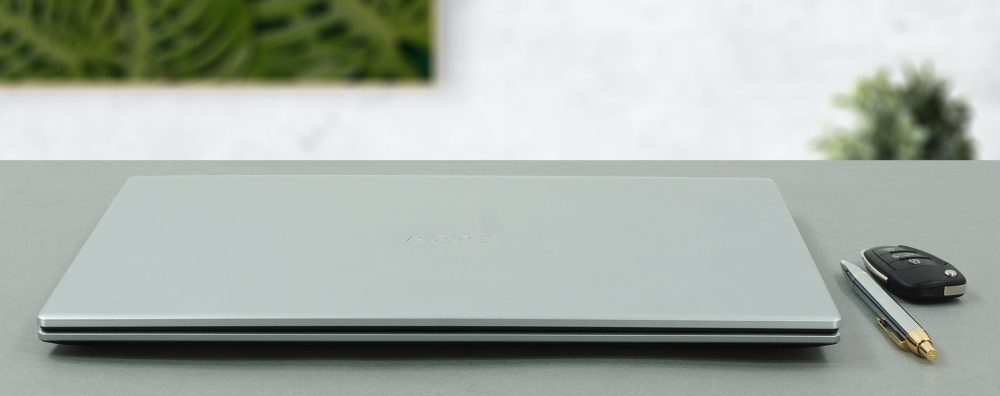
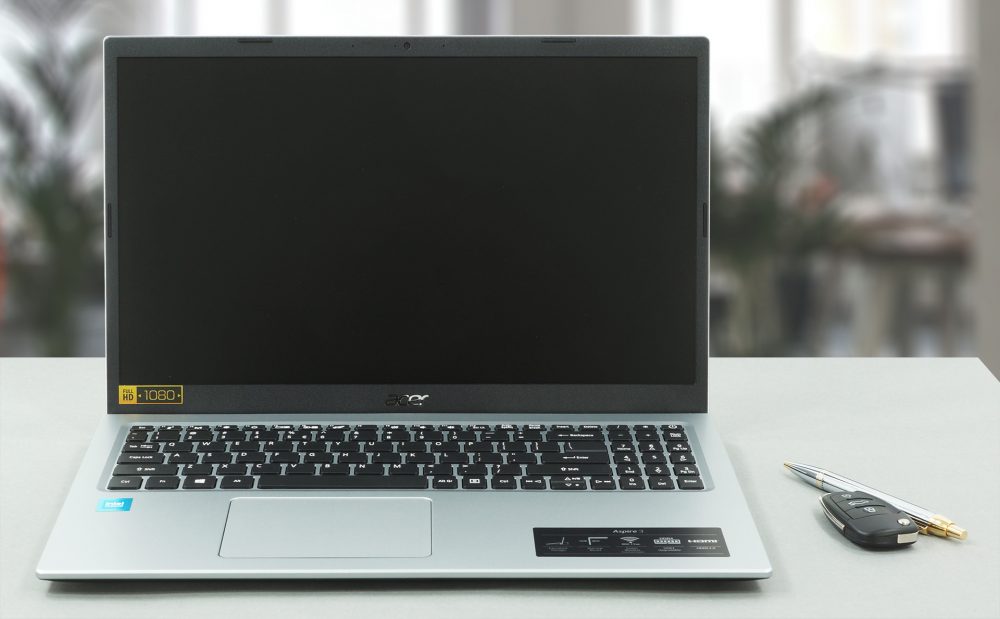

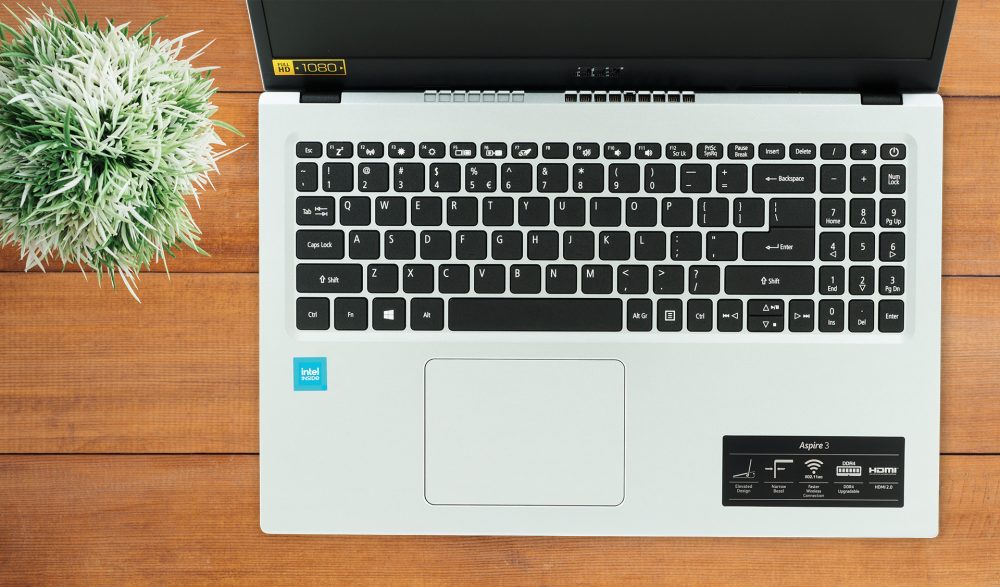
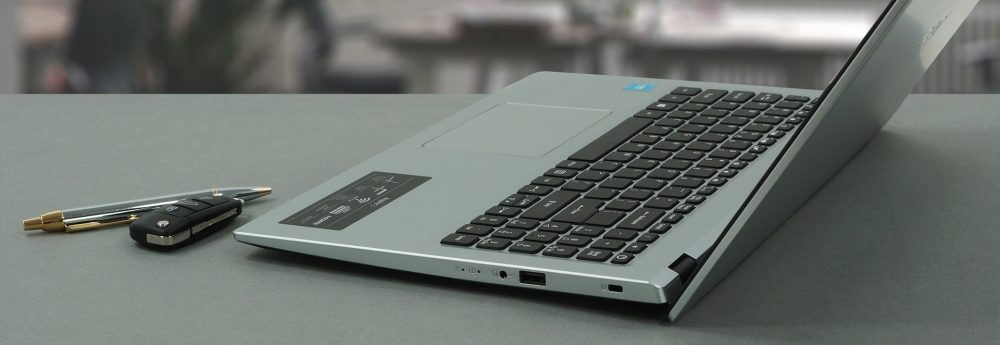
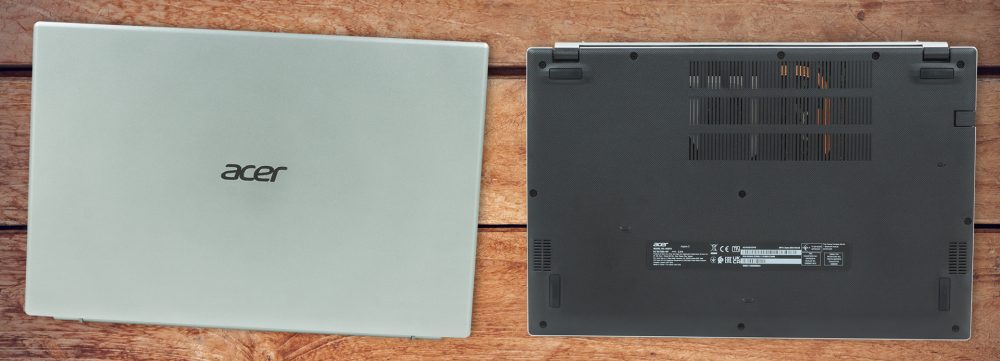



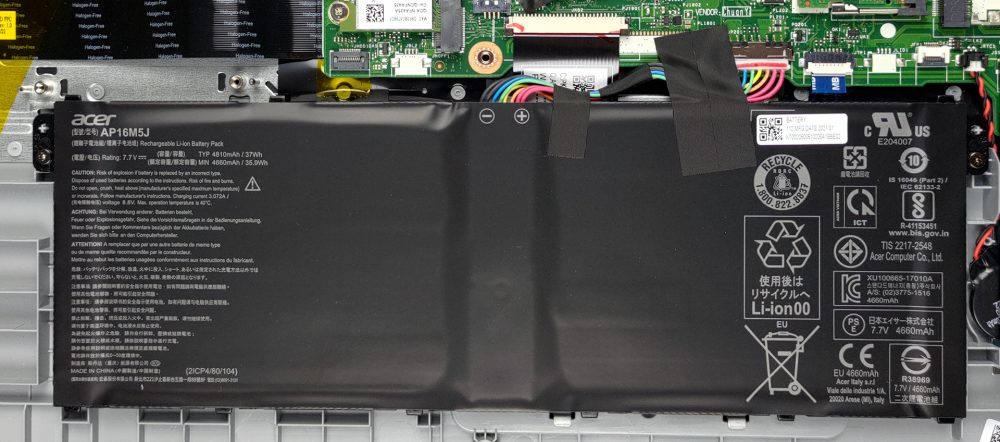
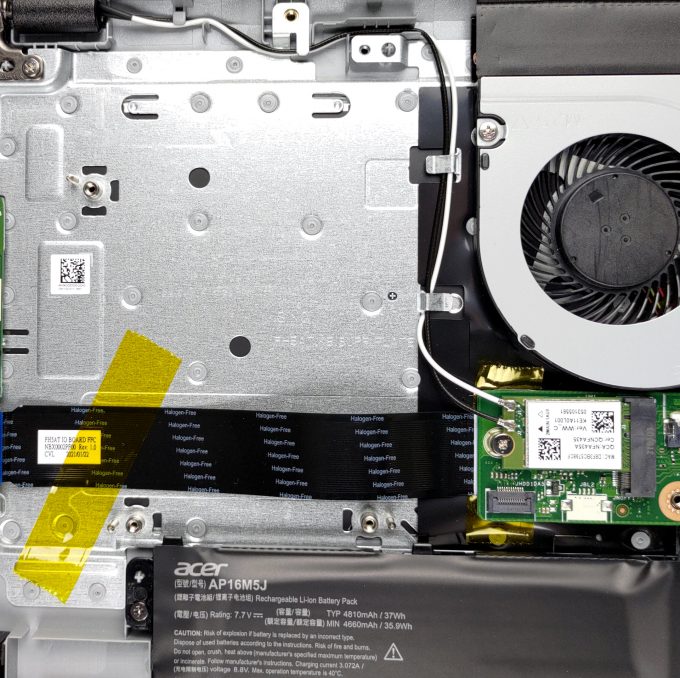
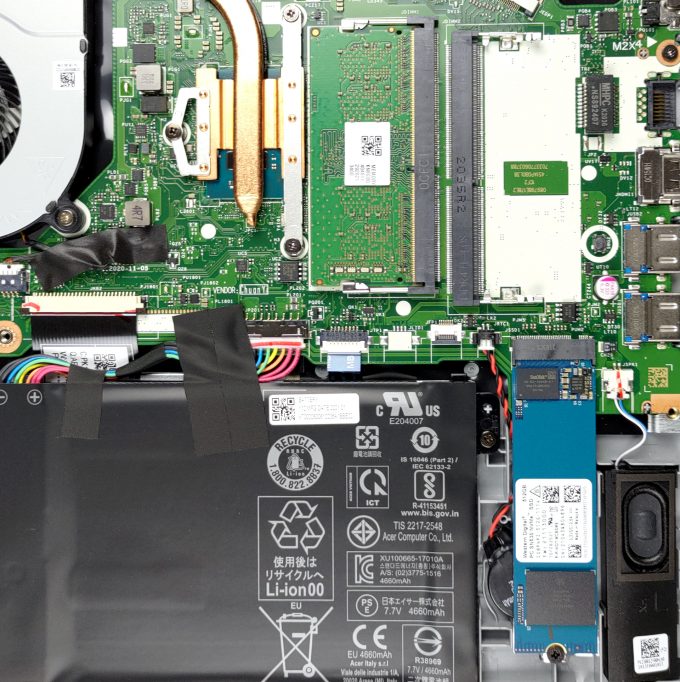
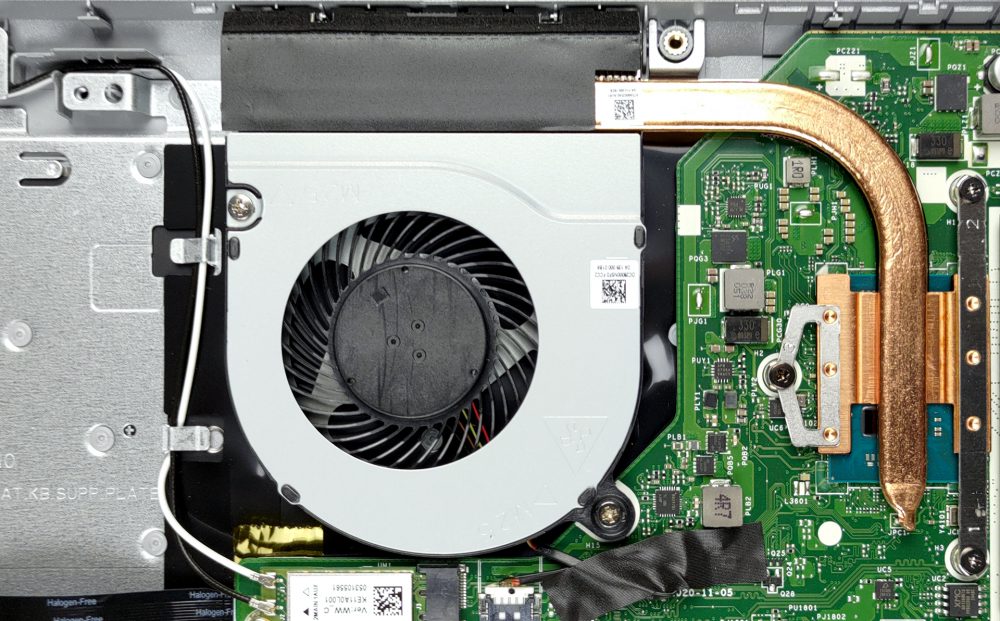
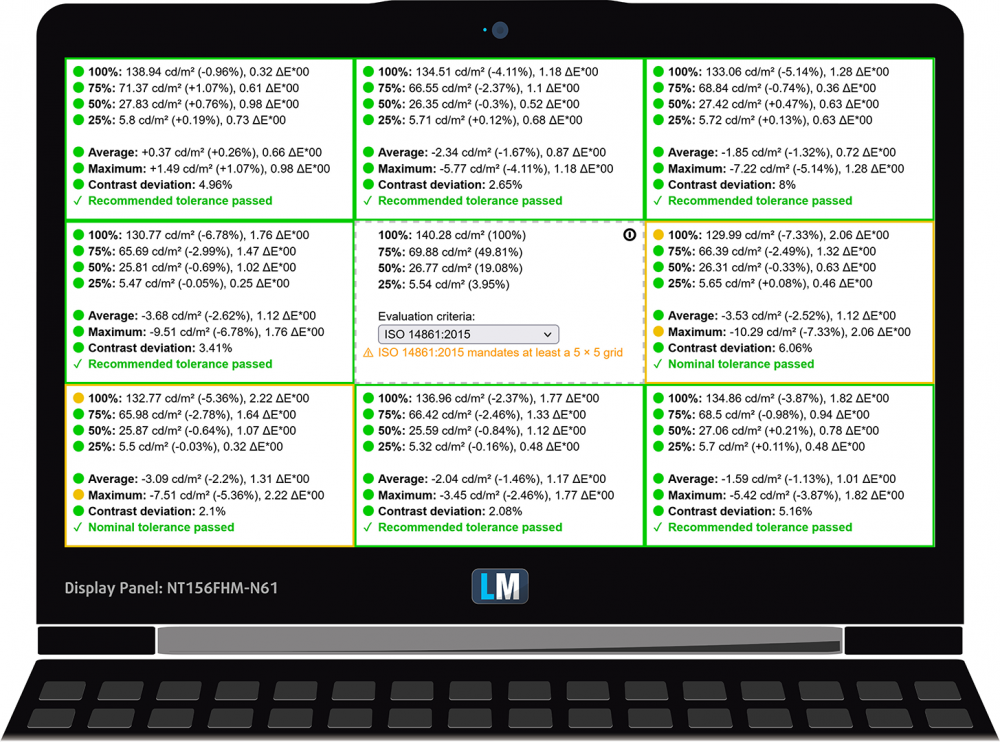
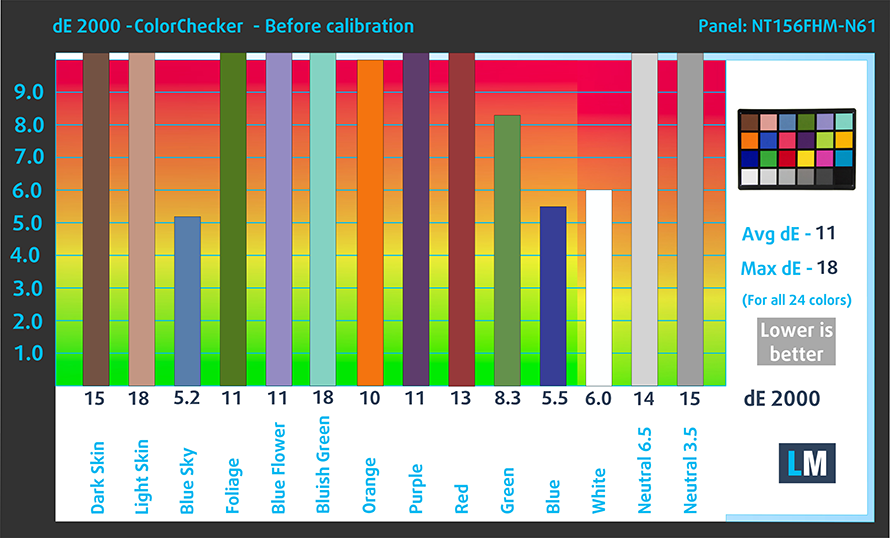


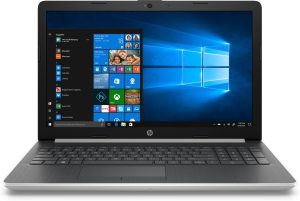
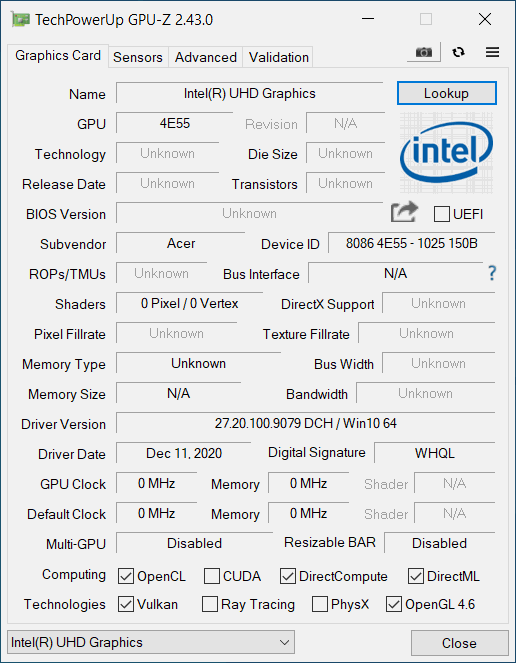








the 2.5″ SATA bay is useless without the mouting bracket and most importantly, the SATA connector itself.